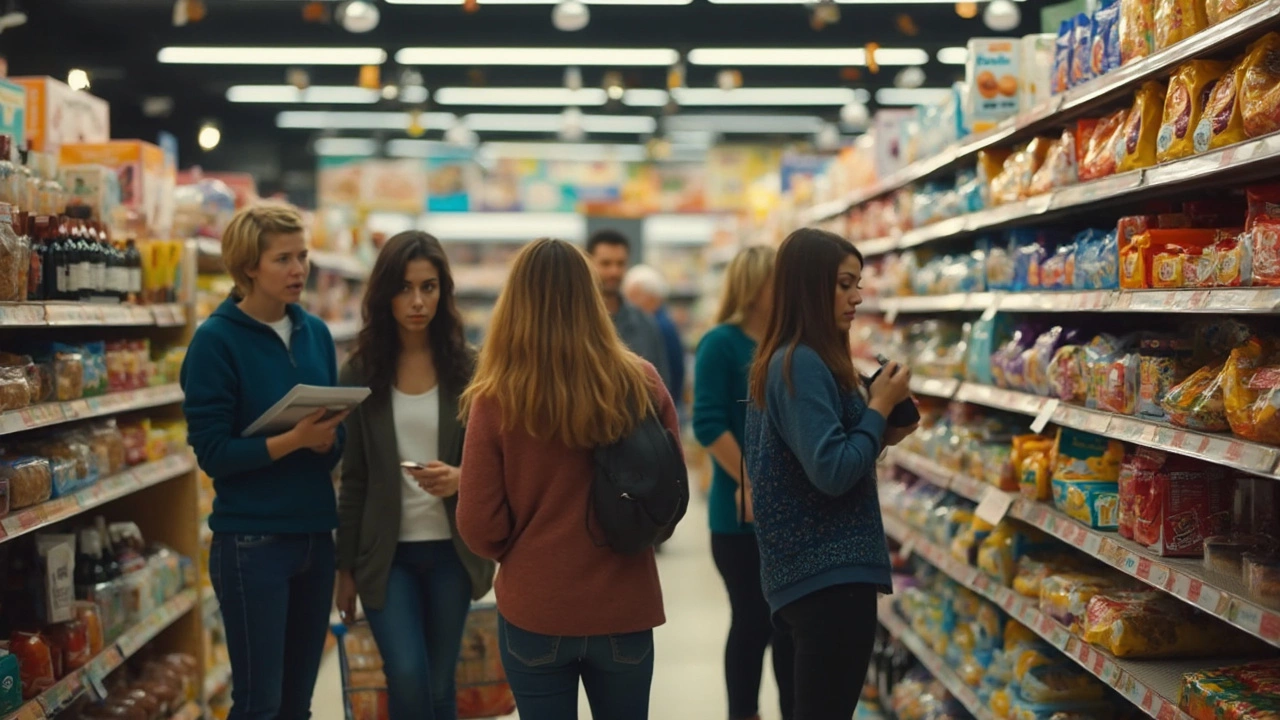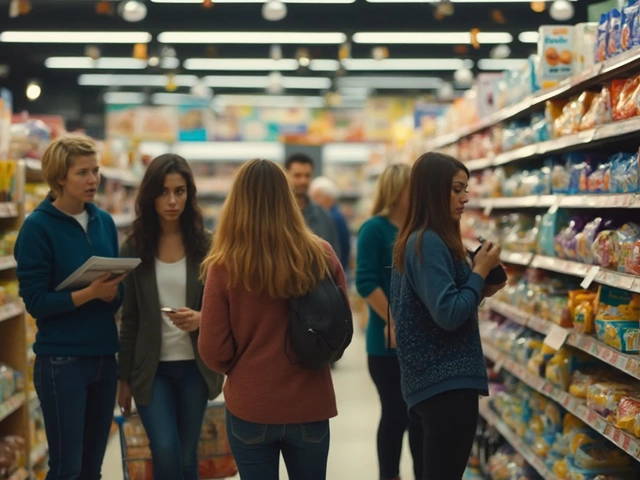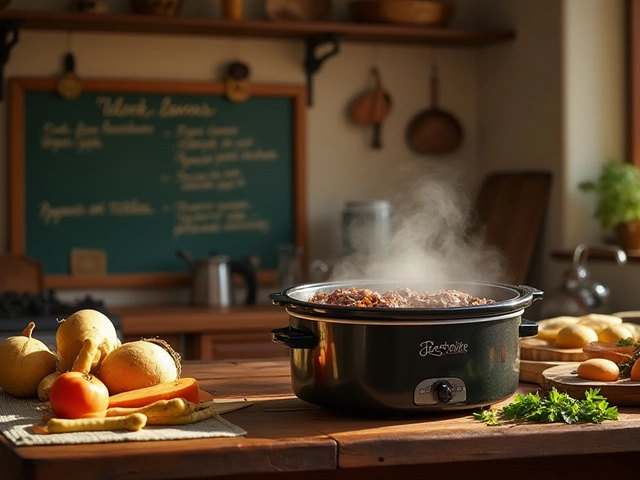Ever think a pickle, a frosted cereal, or your favorite red candies might have animal stuff in them? It’s a bigger issue than you’d guess if you’re trying to stick to plant-based eating. Companies love using animal byproducts where you’d least expect—mostly because it’s cheap, or it gets the right texture or color.
The tough part is how sneaky some of these ingredients are. Gelatin, sure, everyone knows that comes from animals. But did you know some sugars get filtered through animal bone char? Or that beer and wine sometimes use fish bladders in the making? If you don’t check, these details slip right by. This happens even in foods you’d swear were “just plants.”
If you’re just getting serious about eating vegan, or you’ve been at it a while and still get tripped up, you’re not alone. Even the most dedicated label-readers find themselves surprised by where animal products turn up. Stick around—I’ll break down some of the biggest offenders and show you exactly what to look for.
- Not-So-Obvious Animal Ingredients
- Hidden Surprises in Everyday Food
- Sneaky Additives in Processed Products
- Watch Out For These in Restaurants
- Labels That Trip People Up
- Easy Swaps and Quick Fixes
Not-So-Obvious Animal Ingredients
This is where things get wild. You pick up an everyday food that screams "plant-based," but right there in the fine print lives a sneaky animal ingredient. If you’re on the lookout for hidden animal products, get ready for some surprises.
Let’s talk about gelatin. Most people know it’s made from animal bones and skin, but it hides in way more than just gummy bears and marshmallows. You'll spot it in fat-free yogurts, some frosted cereals, and even in certain vitamin capsules. Always double-check if you want to dodge it.
Next is casein and whey. These are milk proteins, and you’ll see them slip into crackers, bread, and even some plant-based cheese shreds. They can make a food taste “cheesy” without being actual cheese—sneaky, right?
Shellac is another curveball. Got shiny apples or those glossy, hard candies? Shellac gives them that shine, and it comes from bugs. Seriously. Check out this quick table of surprise animal-derived ingredients and where they lurk:
| Ingredient | What It’s In | Animal Source |
|---|---|---|
| Gelatin | Jellies, Marshmallows, Yogurts | Bones/skin |
| Casein/Whey | Bread, Crackers, Packaged Foods | Milk |
| Shellac | Fruits, Candy Coatings | Bugs (lac beetle) |
| Carmine | Red Yogurts/Ice Cream, Candy | Crushed beetles |
| L-cysteine | Bread, Bagels | Duck/human hair or bird feathers |
And here’s carmine (sometimes called cochineal). This is what gives some pink yogurts and drinks their color. It’s literally crushed beetles. Most folks have no clue they’re eating bugs.
Then you've got L-cysteine. It’s used to soften commercial breads and bagels and is often sourced from duck feathers or human hair. Yuck, but true. Always read the ingredient list if you spot unfamiliar words and don’t be shy about googling them.
If you’re going for truly vegan food, keep your phone handy in the store and scan anything questionable. Once you know the usual suspects, it gets a lot easier to dodge them.
Hidden Surprises in Everyday Food
Just because a food sits on the shelf next to veggies doesn’t mean it’s clear of animal ingredients. Here’s where things get tricky—some of the most common grocery items have sneaky hidden animal products that most people don’t even consider.
Take white sugar, for example. In the United States, a lot of regular sugar is filtered using bone char—that’s ground up animal bones—to get it super white. You wouldn’t taste or smell it, but it’s enough to make a pure vegan cringe. Beet sugar and organic cane sugar are usually safe, but anything just labeled “sugar” could be a gamble.
Check out breads, too. Plenty of sandwich breads use L-cysteine, which can be sourced from duck feathers or even human hair, strangely enough. Some manufacturers are moving away from this, but unless you see “vegan” right on the package, it’s tough to know for sure without calling the company.
Let’s talk about candy. Gummy bears, marshmallows, and many chewy sweets rely on gelatin, which comes from boiling animal skin, tendons, or bones. Then there’s carmine, a red coloring made from crushed bugs—yep, bugs—in a bunch of red candies and yogurts.
Wines and beers are no safer, either. Many use isinglass, a substance from fish bladders, to make drinks look clear. The annoying thing is that you won’t see this listed on the label. If you ever wondered why some “vegan” wines cost more, it’s because they actually skip these animal-based filters.
- Refined sugar: Often filtered with bone char
- Bread: Could contain animal-derived L-cysteine
- Gummy candies & marshmallows: Usually made with gelatin
- Red foods: Carmine dye (crushed insects)
- Alcohol: Isinglass (fish bladders) sometimes used as a filter
If you want to avoid these surprises, look for products marked “vegan” or reach out to the company if you’re unsure. Shopping at stores that specialize in vegan food can also cut down on these headaches.
| Food | Hidden Animal Product | Safer Vegan Alternative |
|---|---|---|
| White Sugar | Bone Char | Beet Sugar, Organic Cane Sugar |
| Bread | L-cysteine (duck feathers) | Breads labeled "vegan" |
| Gummy Candy | Gelatin | Pectin or Agar-based Candies |
| Red Candy/Yogurt | Carmine (insects) | Fruit/Vegetable Based Dye |
| Beer/Wine | Isinglass (fish bladder) | Vegan Labeled Drinks |
Awareness is key. Even if you just remember a few of these, you’ll be way ahead of most shoppers.
Sneaky Additives in Processed Products
If you think grabbing a bag of chips or a box of cereal means you’re safe, think twice. Hidden animal products slip into processed foods all the time. Companies sometimes swap in animal-based additives just because they're cheaper or give the right crunch or gloss.
Here’s where it gets frustrating: a “plant-based” label doesn’t always mean animal-free. Let’s call out a few regular offenders you’ll see over and over:
- Gelatin: This stuff shows up in way more than just marshmallows and gummies. You’ll find it in certain yogurt brands, chewy candies, and even some creamy desserts. Gelatin is always animal-derived—usually from pork or beef.
- L-cysteine: It’s a dough conditioner in packaged breads and pastries, but do you know it’s often made from duck feathers or even human hair? Look for it in ingredient lists on wraps and tortillas.
- Carmine (also called cochineal): Tiny bugs get crushed to make this red food coloring. It’s in some fruit yogurts, red candies, and even pink juices. Sneaky and pretty gross if you’re vegan.
- Casein and whey: These are milk proteins, so watch out in “healthy” snack bars or even some chips that seem dairy-free.
- Isinglass: Not something you’ll see on a chip bag, but if you’re into beer or wine, some brands use this fish bladder derivative to filter drinks. It never fails to throw people off.
To show just how often these surprise ingredients slip in, check out this quick look at common offenders in processed foods:
| Ingredient | Typical Products | Animal Source? |
|---|---|---|
| Gelatin | Gummy candy, yogurt, desserts | Yes |
| L-cysteine | Breads, baked goods, wraps | Usually (duck feathers/hair) |
| Carmine | Fruit yogurts, drinks, candy | Yes (insects) |
| Casein | Protein bars, chips | Yes (milk) |
| Isinglass | Beer, wine | Yes (fish) |
If you don’t want to play ingredient detective every time, here are some tips:
- Stick with whole foods more often—fewer ingredients mean fewer surprises.
- Look for certified vegan labels if you’re shopping processed.
- Check brands online; lots now list vegan food details on their websites.
Next time you’re hunting for snacks or meal fixes, give that label one extra glance. You’ll dodge these sneaky animal surprises and stay true to your plant-based goals.

Watch Out For These in Restaurants
Eating out as a vegan means you need to be a bit of a detective. Hidden animal products pop up in places you’d never expect, especially when you ask for a “vegetarian” or “plant-based” option. Just because a dish looks meat-free doesn’t always make it vegan-friendly. Chefs and servers might not even realize certain things aren’t vegan unless you ask very specific questions.
Biggest offenders? Broths and soups, which often use chicken or beef stock for depth—even if there’s zero meat in sight. Then there’s rice; at some restaurants (especially in Mexican and Asian spots), it’s usually cooked in either butter or chicken broth. Tortillas and bread sometimes get brushed with butter or use dairy in the preparation stage. And those seemingly innocent vegetable stir-fries? Watch out for oyster sauce or fish sauce sneaking in for flavor.
If you’re ordering pasta, double-check about the noodles (some contain hidden animal products like eggs) and ask if they finish dishes with cheese, butter, or cream. Even the fries aren’t always safe—some places use animal fat in the fryer or fry them alongside chicken or fish. Salad dressings, too—Caesar, ranch, and even vinaigrettes often slip in anchovies, eggs, or honey without mentioning it.
- Ask how your food is cooked—broth, sauces, and marinades can all contain animal bits.
- Check if there’s any butter, cheese, eggs, or honey added at the end, even as a "garnish."
- Don’t assume “vegan” on the menu means 100% plant-based. Always double-check.
- If you’re unsure, most decent spots will give you the ingredient rundown if you just ask.
Restaurants are getting better about vegan food options, but the details are always changing. According to the National Restaurant Association’s 2024 data, over 55% of places now offer at least one vegan entrée, but less than 20% have vegan-friendly desserts or sides—a good reason to ask before you order.
Labels That Trip People Up
Reading food labels sounds simple. But when you’re trying to avoid hidden animal products, things get confusing fast. You’d think going for the “natural flavors” buzzword would mean plant stuff, but surprise—sometimes companies squeeze animal blends right into that catchall term. And it’s not even the weirdest thing out there.
Let’s look at some of the top label phrases or ingredients that throw people off:
- Casein, whey, and lactose – If you see any of these, they’re from milk. They show up in all kinds of crackers, chips, and processed foods, including ones that don’t taste cheesy at all.
- L-cysteine – This is an amino acid used to make bread fluffy. It’s often made from duck feathers or hair but can be labeled just as “L-cysteine.”
- Carmine/cochineal – Perky pink and red candies, juices, and yogurts sometimes use these. They come from crushed beetles, not fruit. That’s not the “natural coloring” you’d hope for.
- Shellac – Think shiny candy shells or coating on some fresh produce. This is another one from bugs—lac bugs, to be exact. It makes things look glossy but it’s far from vegan.
- Isinglass – This is a super weird one you’ll spot in beer or wine ingredients (if they even list it). It’s basically dried fish bladders, used to clarify drinks. Hardly anyone expects this in their booze.
- Bone char – Some regular white sugar brands filter their sugar through burnt up cattle bones. It won’t show on the label—if you’re after vegan food, you’ll need to hunt for certified vegan or organic sugar to be sure.
- Natural flavors – The most mysterious of all. This could come from plants... or animals. You’d actually have to check with each brand to know what’s really hiding in there.
If you want some hard data, here’s a quick look at how common these sneaky non-vegan labels pop up in grocery aisles:
| Ingredient | Common Products | Found in (%) |
|---|---|---|
| Gelatin | Gummy candy, Jell-O | 75% |
| Carmine | Red candy, yogurt | 30% |
| Isinglass | Beer, wine | 20% |
| Shellac | Jelly beans, apples | 40% |
Quick tip: Certified vegan logos save you stress. If you see those, you can skip the ingredient detective work. Otherwise, keep an eye out for these classic label tricks—now you know why your supposedly plant-based snack sometimes isn’t quite what it claims to be.
Easy Swaps and Quick Fixes
Don’t let those hidden animal products stress you out. Swapping out sneaky non-vegan things for plant-based versions isn’t as tough as it used to be. Here’s a quick rundown of everyday problem foods and the swaps that actually work—plus a few bonus hacks to save you time.
- Gelatin (gummy candy, marshmallows): Look for brands using agar-agar (a seaweed extract) or pectin. Trader Joe’s has gelatin-free marshmallows that actually taste right.
- Worcestershire sauce: Most classic versions use anchovies. Annie’s and Wizard brands make vegan ones, or just splash in soy sauce with a touch of vinegar as a backup.
- Milk chocolate and baked goods: Dark chocolate (over 70% cocoa) is often vegan, but check the label for milk solids. For baking, swap out eggs for ground flaxseed with water (1 tbsp flax + 3 tbsp water = 1 egg). Most dairy can be swapped with oat or soy milk; vegan butter works fine anywhere regular butter fits in.
- Sugar: A lot of US white sugar is filtered with bone char. Look for certified organic, or pick up beet sugar—neither uses bone char. Some folks just go for raw cane sugar or coconut sugar to stay safe.
- Beer and wine: Companies are catching on that not everyone wants fish bladder in their drink. Barnivore.com is an up-to-date database showing which brands are 100% vegan-friendly.
Reading labels is your best tool, but the ingredient names can be weird—casein, whey, lactose, albumen, and lard are all obvious red flags for hidden animal products. None of those belong in truly vegan food.
| Common Non-Vegan Ingredient | Easy Vegan Swap |
|---|---|
| Honey | Maple syrup or agave |
| Parmesan cheese on pasta | Nutritional yeast |
| Caesar salad dressing | Dijon vinaigrette or tahini lemon |
| Egg wash (on baked goods) | Plant milk + maple syrup, or aquafaba |
If you’re out at restaurants or buying packaged food, don’t hesitate to ask what’s in something. A lot of restaurants keep vegan swaps like mayo, cheese, or sauces on hand these days. And for a vegetarian tips bonus: Apps like Is It Vegan? can scan barcodes and spot those sneaky animal products instantly. It’s a real game changer when you need answers now, not ten minutes from now after a Google session.








Write a comment